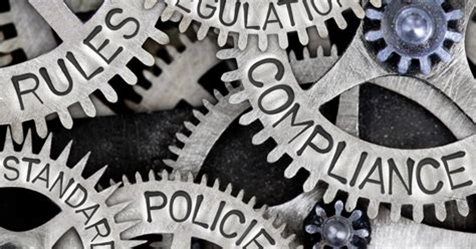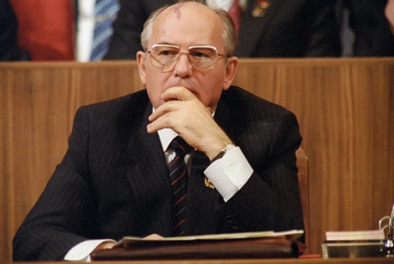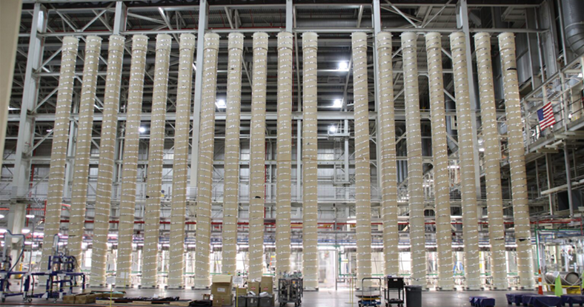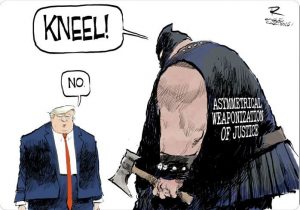HALF-FULL REPORT 04/26/24
 Losing Control
Losing Control
The Effects of Chernobyl.
 I recall driving from Iggesund, Sweden, to the airport at Stockholm, 38 years ago today. The nuclear power plant along the way was conducting an emergency shutdown and evacuation, which only made sense after I landed in JFK. This was due to the Chornobyl reactor fire way over in Ukraine, which led to Sweden shutting down its reactors in response to detected radiation. The Chornobyl catastrophe was caused by human error, design flaws, and the Soviet Union’s focus on rapid industrial progress over safety measures. The collapse of the Soviet Union can’t be attributed to a single factor, but information restrictions and the inability to address societal and economic issues played a significant role. The internet was emerging as a potential solution to totalitarianism, providing easy access to information for all.
I recall driving from Iggesund, Sweden, to the airport at Stockholm, 38 years ago today. The nuclear power plant along the way was conducting an emergency shutdown and evacuation, which only made sense after I landed in JFK. This was due to the Chornobyl reactor fire way over in Ukraine, which led to Sweden shutting down its reactors in response to detected radiation. The Chornobyl catastrophe was caused by human error, design flaws, and the Soviet Union’s focus on rapid industrial progress over safety measures. The collapse of the Soviet Union can’t be attributed to a single factor, but information restrictions and the inability to address societal and economic issues played a significant role. The internet was emerging as a potential solution to totalitarianism, providing easy access to information for all.
The year 1986 marked a turning point from the old world, with new technology enabling communication over great distances. However, it wasn’t until the development of modern information systems like the Internet that information became truly ubiquitous and accessible.
Governments appear to universally fear the free movement of information. Russia invaded Ukraine to prevent ideological contamination. Western governments have turned boorish and Ham fisted while attempting to control ideas. The persecution of Trump and the J6 insurrection hoax are little more than frantic efforts to maintain a lid on conceptualization.
The government and its agencies were built in an earlier age, and the current attitude towards censorship seems to have a damn-the-torpedoes perspective. Open communication can make it easier for people to share information and ideas freely, challenging the dominant narrative and making it difficult for those in power to maintain control. The emergence of new ideas, perspectives, and courage led to the rapid fall of the USSR.
With all due respect to the heads of our government agencies and bureaus, I sure hope that you know what you are doing. Strict information control ultimately led to the collapse of the Soviet Union. Things just stopped working.
The USS Boxer, an amphibious assault ship based in San Diego, is yet another amphibious warship that is currently inactive due to a propulsion issue. There is no dry dock in the United States available for the vessel to be repaired. The official numbers are fake. Prestigious universities are closing because of protests. Bridges are falling into the sea. The southern border is open and undefended. Violent crime is exploding in metropolitan areas. Things are no longer working.
The Soviets tried to manipulate the truth, too.
********
Speaking of Things Nuclear. We are Back.
 The first 100-kg batch of high-assay, low-enriched reactor fuel was produced by at the Piketon, Ohio, uranium enrichment facility this month. While the amount of material is limited, this marks the first recovery of the American enrichment industry after Hillary Clinton made her infamous deal with Russia to close the plants and sell the ore in the ground to Putin. Piketon is practically in my backyard, and my neighbors have been burning the midnight oil for years to reach this milestone.
The first 100-kg batch of high-assay, low-enriched reactor fuel was produced by at the Piketon, Ohio, uranium enrichment facility this month. While the amount of material is limited, this marks the first recovery of the American enrichment industry after Hillary Clinton made her infamous deal with Russia to close the plants and sell the ore in the ground to Putin. Piketon is practically in my backyard, and my neighbors have been burning the midnight oil for years to reach this milestone.
The process of uranium enrichment is crucial for the production of both civilian and military nuclear substances. The gas centrifuges at Piketon use a technique involving the separation of uranium isotopes by spinning them at high speeds. This process results in the production of enriched uranium, which can then be used in various applications, including nuclear power generation and the development of nuclear weapons. The Piketon facility has played a significant role in the United States nuclear industry, and its operations have been subject to ongoing debate and scrutiny.
The ramping up of enrichment operations may be indicative of a shift in U.S. nuclear policy, signaling a more assertive stance on nuclear deterrence. However, it is important to note that the Department of Energy has not publicly commented on these developments. The rest of the world certainly has.
The government has opposed centralized power plants and large industrial structures since 9/11, but recent events such as Texas blackouts have shifted the balance back towards big power. The resurgence of nuclear power suggests a need for a balance between commercial reality and the desire for an American electrical grid resistant to terrorist threats or Russian missile attacks. The 9/11 attack prompted the government to promote decentralized energy production, resulting in the current system of solar farms, wind farms, and gas turbine micropower plants. Decentralized energy production has potential benefits for national defense, including improved energy security and reduced reliance on vulnerable centralized power grids.
Recent EPA anti-coal legislation refers to a series of regulatory steps taken by the United States Environmental Protection Agency (EPA) to minimize the environmental impact of coal-powered power plants. Limiting the emissions of pollutants like sulfur dioxide, nitrogen oxides, and mercury, which are alleged to contribute to air pollution and various health issues, is the primary objective of these actions. The elimination of coal-fired power plants means the elimination of large targets from the perspective of the national defense.
The left hand of Biden’s government does not appear to know what the right hand is doing.
*******
Information Warfare
 The information revolution and the development of precision munitions have had a big effect on the power generation and oil refining industries in Russia and Ukraine. They’ve made it easier to target critical infrastructure with more precision and accuracy. This has raised concerns about the vulnerability of these facilities to attacks in the USA and the EU, both from state actors and non-state actors, like terrorists and cybercriminals. The potential for disruption remains a significant concern.
The information revolution and the development of precision munitions have had a big effect on the power generation and oil refining industries in Russia and Ukraine. They’ve made it easier to target critical infrastructure with more precision and accuracy. This has raised concerns about the vulnerability of these facilities to attacks in the USA and the EU, both from state actors and non-state actors, like terrorists and cybercriminals. The potential for disruption remains a significant concern.
There is a significant impact of precision munitions on the ongoing conflict in the Red Sea and Yemen. This has raised concerns regarding the potential for increased civilian casualties and the vulnerability of critical infrastructure such as ports, oil refineries, and power plants to targeted attacks. Both the Saudi-led coalition and the Houthi rebels have tried to improve their ability to use precision weapons. The former has invested in advanced targeting systems, while the latter has reportedly bought more sophisticated weapons from outside sources. However, it is important to note that precision munitions have not been able to end the conflict, which has continued to destroy the region and cause great pain to the civilian population.
Modern cruise missiles, in addition to heavy-hitting ballistic missiles, possess the capability to sink modern warships and container ships. The relative advantage of either offense or defense is now a matter of electronic information. In modern times, cargo ships with spoofed navigation have blocked the Suez Canal, and American destroyers have been spoofed to collide with other vessels.
Israel’s capability to eliminate Iranian drones and missiles is largely attributable to its information advantage. Israel’s advanced intelligence and surveillance capabilities, comprising satellite imagery, electronic eavesdropping, and human intelligence, have enabled it to gather comprehensive information regarding Iranian military activities and intentions. This information has enabled Israel to detect and track Iranian drones and missiles, thereby enabling its air defenses to intercept and destroy them before their arrival. Furthermore, Israel has made significant investments in the development of advanced air defense systems, such as the Iron Dome and Arrow systems, which are specifically designed to provide effective protection against a diverse range of threats, including drones and missiles. The broader military infrastructure of Israel further enhances its effectiveness.
The Gaza War and Iran’s maneuverings have implications for the American strategy of dispersing electrical generating capacity. Modern cyber warfare has rendered obsolete the American notion of a new electrical grid without single points of failure. The environmental narrative and greenhouse gas hooey serve as a cover for re-electrifying the United States. The continuity of government can no longer depend on distributed power generation to offer advantages and must now deal with hundreds of thousands of points of cyber failure. The new grid is inefficient and cannot be secured from modern cyber warfare in the same manner as Iran’s missiles over Israel.
This is a big deal.
*******
Gaza War Protests
 Over the past few years, Columbia University has experienced numerous student-led protests addressing various issues, including sexual assault policies, fossil fuel investments, and matters related to race and social justice. Notable campaigns like ‘No Red Tape’ and ‘Fossil Free’ have raised awareness and prompted change. Students have also protested against Israeli policies, advocating for the Boycott, Divestment, and Sanctions (BDS) movement. Iranian propaganda has played a role in these protests, attempting to influence public opinion by promoting anti-Israel messages and narratives. While it’s difficult to determine the extent of Iranian propaganda’s impact on university protests, it has contributed to polarizing discourse and increasing tensions between Jewish and pro-Hamas groups on campus. The media’s influence on the protests and anti-Jewish narrative appears to be weakening, as the government seeks to ban apps like TikTok, which are believed to spread propaganda and narratives. A similar campaign against Catholics at the University of Chicago in the 1990s was orchestrated by Obama’s community organizing team. The resolution involved selling university-owned housing to Valerie Jarrett, enabling Obama to later become a senator and president. It is essential to remember the importance of defending religious freedom for all, not just one’s own sect, as seen in the 1930s.
Over the past few years, Columbia University has experienced numerous student-led protests addressing various issues, including sexual assault policies, fossil fuel investments, and matters related to race and social justice. Notable campaigns like ‘No Red Tape’ and ‘Fossil Free’ have raised awareness and prompted change. Students have also protested against Israeli policies, advocating for the Boycott, Divestment, and Sanctions (BDS) movement. Iranian propaganda has played a role in these protests, attempting to influence public opinion by promoting anti-Israel messages and narratives. While it’s difficult to determine the extent of Iranian propaganda’s impact on university protests, it has contributed to polarizing discourse and increasing tensions between Jewish and pro-Hamas groups on campus. The media’s influence on the protests and anti-Jewish narrative appears to be weakening, as the government seeks to ban apps like TikTok, which are believed to spread propaganda and narratives. A similar campaign against Catholics at the University of Chicago in the 1990s was orchestrated by Obama’s community organizing team. The resolution involved selling university-owned housing to Valerie Jarrett, enabling Obama to later become a senator and president. It is essential to remember the importance of defending religious freedom for all, not just one’s own sect, as seen in the 1930s.
The protests at Columbia are similar to the Moslim call to prayer. They are an assertion of dominance.
Columbia is the current home of the Obama political machine, which is important to remember. Significant pressure is being applied to the university administration, and when they finally come to the table, you can bet that the Obama machine will profit handsomely. The 1995 publication of Barack Obama’s book “Dreams from My Father: A Story of Race and Inheritance” describes and scripts the current events on the campus of Columbia University.
Follow the money. Follow the influence.
*******
Lawfare: Get Trump
The Supreme Court heard arguments on Thursday in the case of Trump v. United States, which focused on whether and to what extent a former president has immunity from criminal prosecution for official acts while in office. The Supreme Court ruled in 1982 in Nixon v. Fitzgerald that presidents are immune from civil lawsuits based on their official acts. The parties and the justices agreed that purely pri vate conduct by the president, which is allegedly criminal, could be prosecuted, and that the president has some constitutional powers exclusive to him, such as the power to grant pardons. However, the parties and the justices differed on the scope of any immunity, the applicable nomenclature, and the procedural mechanisms for implementing it in the courts. It appears that the most likely outcome of this case will be a lengthy opinion with many concurrences and dissents, in whole or in part.
vate conduct by the president, which is allegedly criminal, could be prosecuted, and that the president has some constitutional powers exclusive to him, such as the power to grant pardons. However, the parties and the justices differed on the scope of any immunity, the applicable nomenclature, and the procedural mechanisms for implementing it in the courts. It appears that the most likely outcome of this case will be a lengthy opinion with many concurrences and dissents, in whole or in part.
In the Stormy Daniels trial, President Trump has denied the allegations against him and referred to the case as a political witch hunt. The case involves allegations of a 2006 sexual encounter with Stormy Daniels, which Trump has denied. Trump’s former lawyer, Michael Cohen, paid Daniels to keep quiet about the alleged encounter. Trump’s defense argues that any transactions were meant to protect his reputation and family, not his campaign. A conviction would not bar Trump from becoming president again, but he would not be able to pardon himself if found guilty. The charge carries a potential sentence of up to four years in prison. Trump’s lawyers have questioned the credibility of Michael Cohen, who has spent time in prison for fraud and other charges. Trump has called on his supporters to peacefully protest the trial against him.
It is clear that we now have four branches, and the fourth branch has covertly existed throughout the 20th Century and certainly the 21st Century. For most of its existence, the IC could rely on centralized media to control narratives. At least two presidents, JFK and Nixon, ran afoul of the IC and were vacated.
Let’s talk about heroes and the drama that is happening in every direction. As governments lose their grip on the narratives, heroes are emerging in every nation.
A true hero is someone who, despite facing insurmountable odds and overwhelming power, remains steadfast in their pursuit of justice and righteousness. This hero may not possess extraordinary physical strength or magical abilities, but their unwavering determination and moral fortitude make them a force to be reckoned with.
In a world where dark forces threaten to consume everything in their path, this hero rises to the challenge, rallying the oppressed and downtrodden to stand against their oppressors. They inspire hope in the hearts of the people, showing them that even in the darkest of times, there is a glimmer of light that can guide them toward a better future.
This hero may come from humble beginnings, perhaps as a simple farmer or a lowly blacksmith, but their innate courage and sense of justice propel them into the role of a champion. They are not motivated by fame or glory, but rather by a deep-rooted desire to see the world become a better place for all its inhabitants.
As they embark on their journey, this hero finds themselves facing seemingly insurmountable challenges. Powerful armies, malevolent sorcerers, and cunning spies all seek to bring them down, but they remain undeterred. With each victory, no matter how small, their resolve is only strengthened, and their legend grows.
Along the way, this hero forms bonds with a diverse array of allies, each with their unique skills and perspectives. Together, they become a formidable force, united in their pursuit of justice and the defeat of their enemies. They learn from one another, growing stronger as individuals and as a group, and their shared experiences forge an unbreakable bond between them.
As the final battle approaches, the hero, and their allies, face their greatest challenge yet. The enemy’s power seems insurmountable, and the odds of victory appear slim. But the hero remains undaunted, drawing strength from the bonds they have forged and the knowledge that they are fighting for a just cause.
In the end, it is the hero’s unwavering determination and moral fortitude that ultimately leads them to victory. They do not defeat their enemies through brute force alone, but rather by inspiring hope and unity in the face of overwhelming odds. As the dust settles and the world begins to rebuild, the hero’s legend lives on, a shining example of courage, resilience, and the indomitable human spirit.
History is turning a page, and we might very well be entering an age of heroes.
_______________________________________________________________________
Mike Ryan is a chemical engineering consultant to the iron and steel, heavy chemicals, minerals, and fibers industries.

